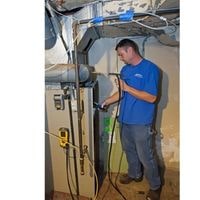Gibson furnace troubleshooting. An appliance manufacturer that specializes in heating and cooling distributes Gibson furnaces.
The furnaces are available in both oil and natural gas models, as well as single-stage or two-stage configurations, and come with heavy, scratch-resistant cabinets.
If minor problems ever arise during daily use, some troubleshooting techniques are recommended to keep the furnace running smoothly without the need for any costly repair work/service calls.
Gibson furnace troubleshooting

Some of the more typical reasons for Gibson furnace troubleshooting are listed here, along with their solutions.
Gibson Furnace is not heating
Gibson Furnace starts then stalls
All of the components of your furnace are powered by the control board. If your furnace is shutting off after only a few minutes, one solution might be to replace the control board.
To do this you’ll need to use a multimeter to test continuity before purchasing a new panel and installing it.
The first step is to turn off your gas supply at the pressure switch to make sure that there isn’t any danger while you’re testing for a faulty control panel.
The pressure switch is closed when there’s enough air coming into the burner. If the pressure switch does not work, the furnace may not detect enough air, causing it to shut off.
Test the continuity of the pressure switch with a multimeter to determine if it is defective. A defective pressure switch should be replaced.
Gibson Furnace makes a lot of noise
If a furnace isn’t operating properly, the first thing to check is the belts that drive the blower. If you’re not sure how to do this, contact someone who can help or consider hiring an HVAC technician.
A functioning blower is key in getting warm air into your heating system and through your house.
Make sure to inspect the motor that turns the belt for worn-out brushes or bearings; these components may need replacing if worn out.
Also note that some motors may be lubricated with light oil, so make sure to check your owner’s manual if you find light oil on the motor gears.
Gibson Furnace blower not running properly
If the capacitor is defective, the fan motor might make a lot of noise, become overheated, or not turn at all. Examine the capacitor to determine if it has failed.
If it’s leaking or bulging out from its casing, you may need a replacement. Capacitors can also be easily tested with an Ohmmeter to determine if they are faulty in any way.
The blower motor can be checked by ensuring that power is going to it and that it spins when switched on.
If it doesn’t spin freely then perhaps replacing will be in order since this means there must be damage inside preventing a good enough seal.
